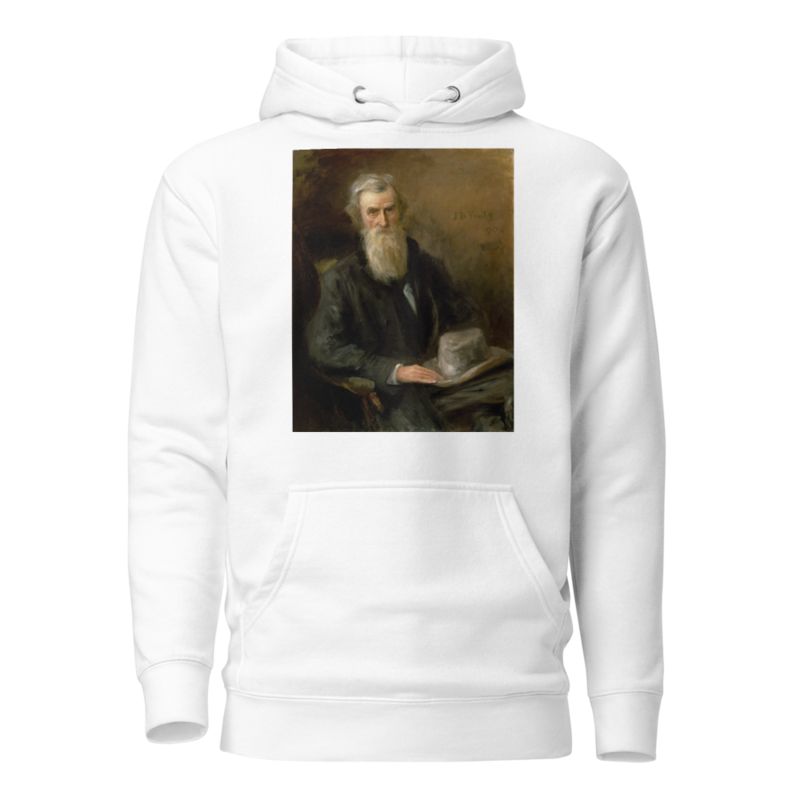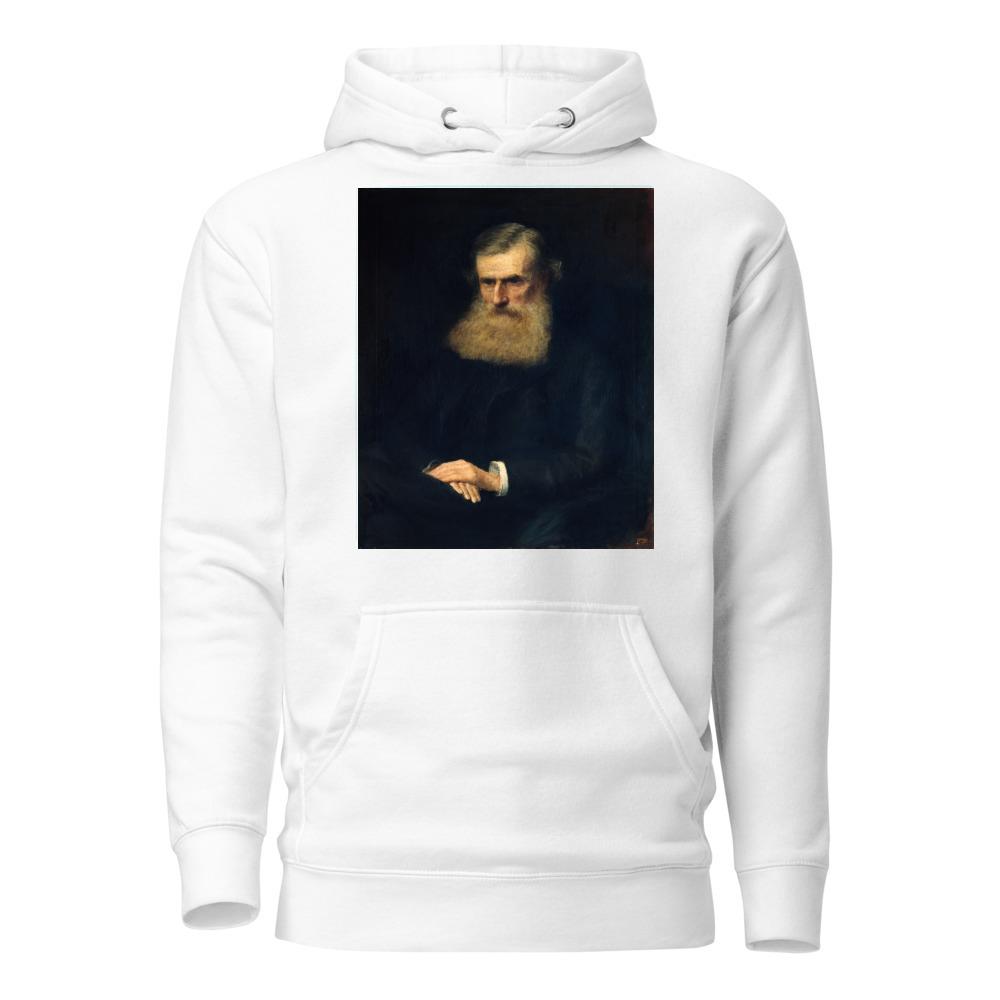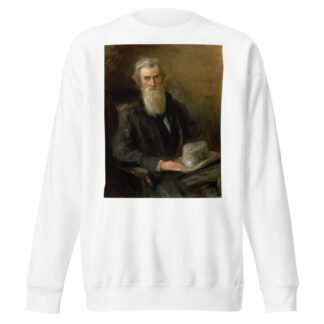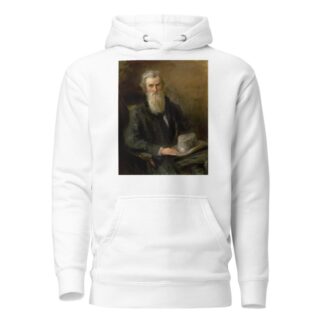Description
Portrait of John O’Leary by John Butler Yeats printed on a Hoodie
About the Hoodie
Modern fit
It provides a more tailored look than a regular fit
Comfortable
The fabric and fit of this item are extra comfy
Tear-away tag
Easily removable tear-away tag that allows you to add a custom inside label
Premium quality
The product is made from premium, high-quality materials
Classic unisex hoodie with a front pouch pocket and matching flat drawstrings. The 100% cotton exterior makes this hoodie soft to the touch.
- 65% ring-spun cotton, 35% polyester
- Charcoal Heather is 60% ring-spun cotton, 40% polyester
- Carbon Grey is 55% ring-spun cotton, 45% polyester
- 100% cotton face
- Fabric weight: 8.5 oz./yd.² (288.2 g/m²)
- Front pouch pocket
- Self-fabric patch on the back
- Matching flat drawstrings
- 3-panel hood
- Tear-away tag
John Butler Yeats (1839-1922)
John Butler Yeats was an Irish artist and the father of W. B. Yeats, Lily Yeats, Elizabeth Corbett “Lolly” Yeats and Jack Butler Yeats. The National Gallery of Ireland holds a number of his portraits in oil and works on paper, including one of his portraits of his son William, painted in 1900. His portrait of John O’Leary (1904) is considered his masterpiece (Raymond Keaveney 2002).
Yeats was born in Lawrencetown, townland of Tullylish, County Down. His parents were William Butler Yeats (1806–1862) and Jane Grace Corbert; John Butler Yeats was the eldest of nine children. Educated in Trinity College, Dublin, and a member of the University Philosophical Society, John Butler Yeats began his career as a lawyer and devilled briefly with Isaac Butt before he took up painting in 1867 and studied at the Heatherley School of Fine Art. There are few records of his sales, so there is no catalogue of his work in private collections. It is possible that some of his early work may have been destroyed by fire in World War II. It is clear that he had no trouble getting commissions as his sketches and oils are found in private homes in Ireland, England and America. His later portraits show great sensitivity to the sitter. However, he was a poor businessman and was never financially secure. He moved house frequently and shifted several times between England and Ireland.
In 1907, at the age of 68, he travelled to New York aboard the RMS Campania, with his daughter Lily, and never returned to Ireland. In October 1909 he moved into this final home, a boarding house run by the Petitpas sisters which was located at 317 West Twenty-Ninth Street. In New York, he was friendly with members of the Ashcan School of painters. He died in the boarding house on 3 February 1922. Edmund Quinn made a death mask which is now in the collection of the Yeats Society in Sligo. John Butler Yeats is buried in Chestertown Rural Cemetery in Chestertown, New York, next to his friend, Jeanne Robert Foster.
Yeats married Susan Pollexfen (13 July 1841 – 3 January 1900) on 10 September 1863 at St. John’s Church, Sligo. Susan Yeats was dismayed when her husband abandoned the study of law to become an artist. Susan is described as a “shadowy figure” who went “quietly, pitifully, mad”.
John and Susan had six children: William Butler Yeats; Susan Mary “Lily” Yeats; Elizabeth Corbett “Lolly” Yeats; Robert Corbet Yeats; John “Jack” Butler Yeats; and Jane Grace Yeats.






Reviews
There are no reviews yet.